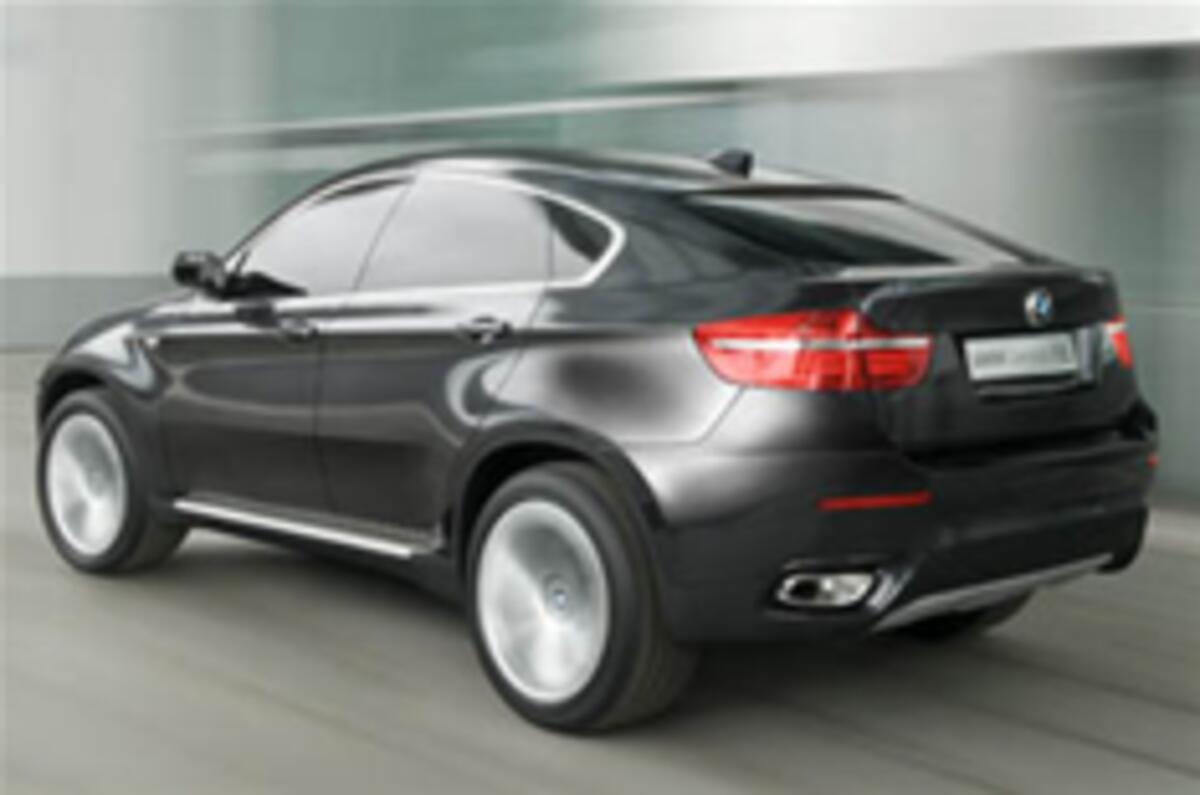This is the remarkable new BMW X6 ‘Sports Activity Coupe’, unveiled today (11 September) at the Frankfurt motor show. It's based on the X5, but 23mm longer, 44mm wider and with a 70mm lower roofline, and will be made at the same factory in Spartanburg, USA.The X6 is very much a performance-orientated vehicle. All models will come with an active chassis system called Dynamic Performance Control and there will be a new range of powerful turbocharged engines. BMW insiders say that a range-topping V10 version of the car, dubbed X6M, is under consideration, and a hybrid version has also been developed.The dramatic styling marks out the X6 in the crowded market for premium SUVs. The large wheels, bulbous arches and deep sides have been carried over from the X5, but the glasshouse is almost saloon-like and the sloping roof line convincing enough to justify the car’s coupe name.The X6 is thought to be at least 10 months from the showroom. When it arrives, BMW is likely to charge more for it than it does for the X5. One industry analyst estimates that the X6 could demand a 20 per cent price premium over its sister car, taking the X6 into direct competition with the hugely successful Range Rover Sport. Around 40,000 X6s could be sold each year, compared to an expected 100,000 X5s.
240bhp and counting
The engine line-up is expected to kick off with 238bhp and 286bhp turbocharged six-cylinder diesel units, both of which will be aimed at the European market. Petrol power will come from a 306bhp twin-turbo six-pot and a yet-to-be-revealed twin-turbo 4.8-litre V8 good for 410bhp.Sources hint that the petrol and diesel engines will come hooked up to a new ZF-engineered 8-speed auto 'box. However, insiders say that the new auto ’box still cannot cope with the V10’s high-revving nature, so a X6M would have to use either a manual gearbox or seven-speed SMG.
Torque about sharp handling
BMW intends to make this comparatively tall and heavy car handle well with the use of a new ‘torque vectoring’ four-wheel drive system called Dynamic Performance Control.‘Torque vectoring’ is the ability to deliver different amounts of torque to each of the car’s wheels. This can be used make a car feel more agile, especially in corners, as well as to deliver greater surefootedness in poor conditions and improve stability.For example, if more torque is directed to the outside wheels when a car is travelling around a right-hand bend, the vehicle will turn into the corner with more commitment and any understeer will be much-reduced. BMW engineers will also be relying the X6’s advanced electrical system to further exploit the potential of torque vectoring.Known as Flexray, the electronic network offers very high-speed data transmission – far faster than today’s ‘multiplex’ wiring systems. The X6’s Flexray system will allow rapid communication between the new transmission, variable-rate active steering and a future active suspension system. It will also allow near-instantaneous adjustments to be made to the way torque is distributed, the exact steering response and the damper settings.





Add your comment